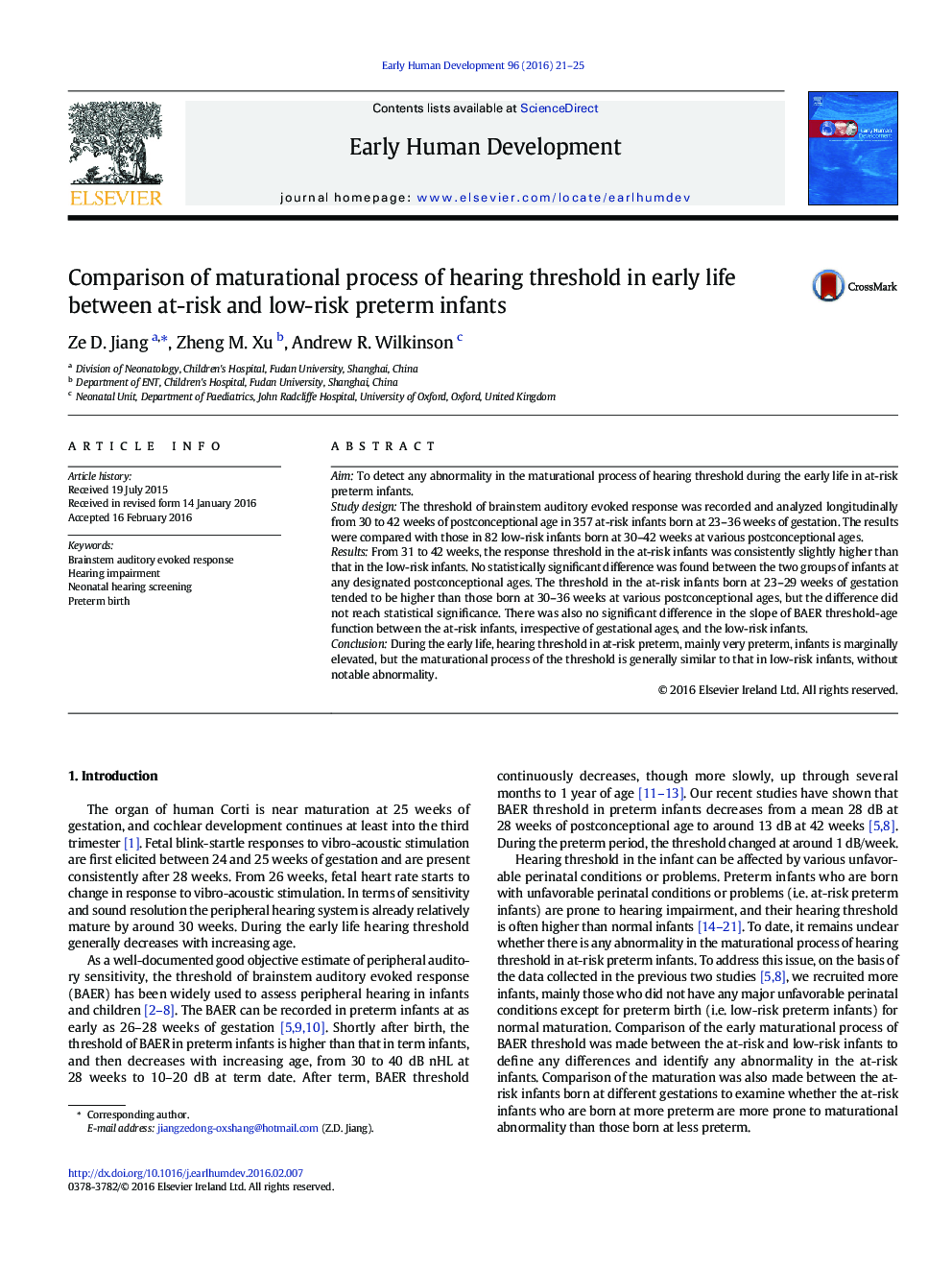| Article ID | Journal | Published Year | Pages | File Type |
|---|---|---|---|---|
| 3916450 | Early Human Development | 2016 | 5 Pages |
•We aimed to identify any abnormality in maturational process of hearing threshold in at-risk preterm infants in early life.•From 31 to 42 weeks of postconceptional age, hearing threshold in at-risk infants is constantly slightly elevated.•But the maturational process of the threshold in these infants is similar to low-risk infants, without notable difference.
AimTo detect any abnormality in the maturational process of hearing threshold during the early life in at-risk preterm infants.Study designThe threshold of brainstem auditory evoked response was recorded and analyzed longitudinally from 30 to 42 weeks of postconceptional age in 357 at-risk infants born at 23–36 weeks of gestation. The results were compared with those in 82 low-risk infants born at 30–42 weeks at various postconceptional ages.ResultsFrom 31 to 42 weeks, the response threshold in the at-risk infants was consistently slightly higher than that in the low-risk infants. No statistically significant difference was found between the two groups of infants at any designated postconceptional ages. The threshold in the at-risk infants born at 23–29 weeks of gestation tended to be higher than those born at 30–36 weeks at various postconceptional ages, but the difference did not reach statistical significance. There was also no significant difference in the slope of BAER threshold-age function between the at-risk infants, irrespective of gestational ages, and the low-risk infants.ConclusionDuring the early life, hearing threshold in at-risk preterm, mainly very preterm, infants is marginally elevated, but the maturational process of the threshold is generally similar to that in low-risk infants, without notable abnormality.
